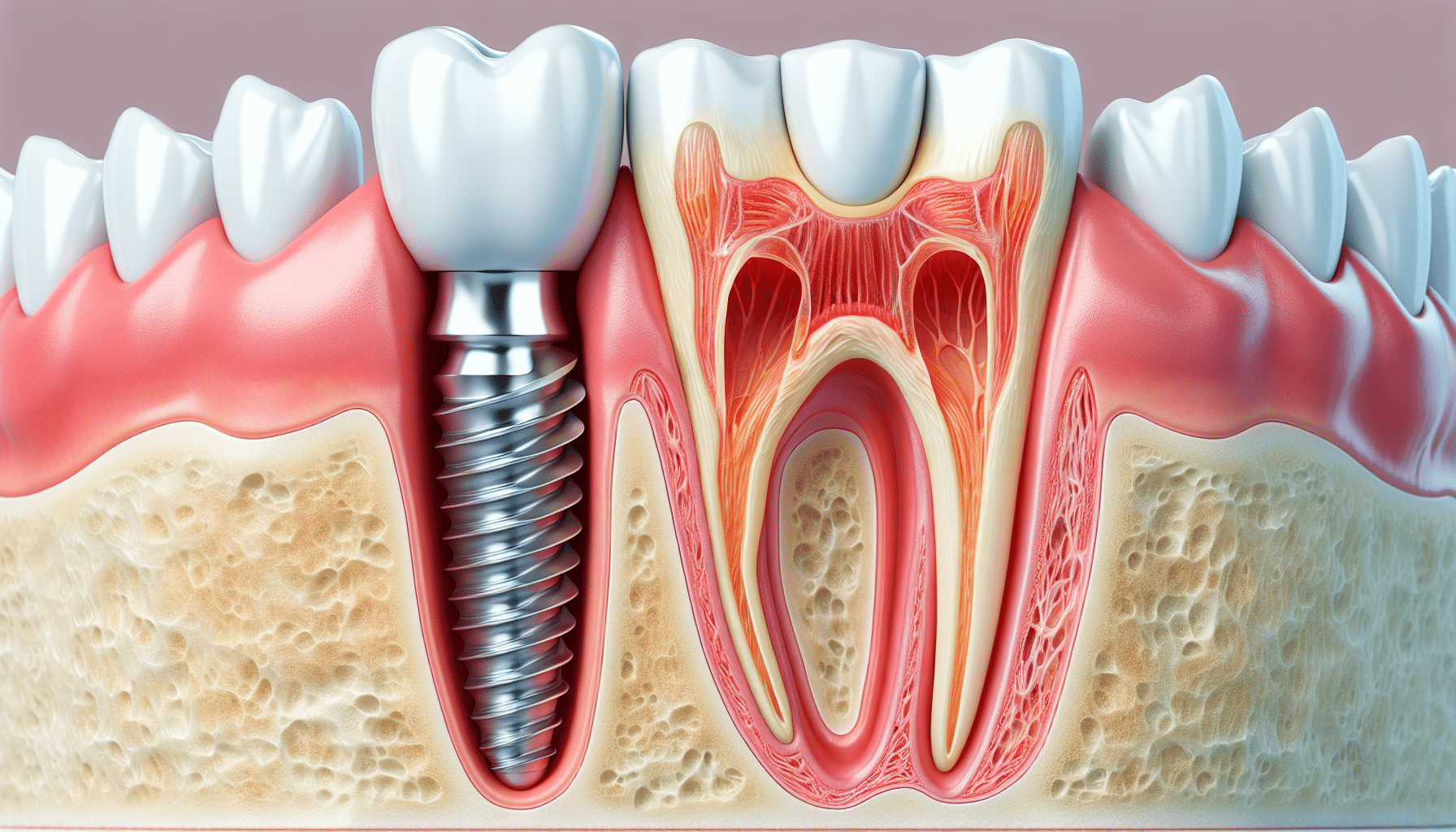The Buzz on Dental Sense
The Buzz on Dental Sense
Blog Article
The Ultimate Guide To Dental Sense
Table of ContentsThe Single Strategy To Use For Dental SenseThe Dental Sense IdeasSome Ideas on Dental Sense You Need To KnowThe Basic Principles Of Dental Sense
are medical tools operatively implanted right into the jaw to bring back a person's ability to chew or their look. They give support for synthetic (phony) teeth, such as crowns, bridges, or dentures. When a tooth is shed due to injury or illness, a person can experience issues such as quick bone loss, faulty speech, or changes to chewing patterns that lead to discomfort.Oral dental implant systems contain a dental implant body and oral implant joint and might additionally consist of an abutment addiction screw. Cosmetic dentistry services. The oral implant body is surgically put in the jawbone instead of the tooth's root. The oral implant joint is generally affixed to the dental implant body by the joint fixation screw and expands through gums into the mouth to support the connected man-made teeth
(https://www.startus.cc/company/dental-sense)Structure of The Oral Implant System choosing dental implants, speak with your oral copyright about the potential advantages and threats, and whether you are a prospect for the treatment. Things to take into consideration: Your general wellness is an important variable in establishing whether you are an excellent prospect for dental implants, for how long it will certainly require to heal, and the length of time the implant might remain in place.
Smoking may impact the recovery process and decrease the long-term success of the implant. The recovery process for the dental implant body may take several months or longer, throughout which time you commonly have a short-lived abutment in place of the tooth. the oral implant procedure: Very carefully adhere to the oral hygiene guidelines provided to you by your oral company.
Not known Details About Dental Sense
Implant failing can cause the requirement for another surgical procedure to take care of or change the dental implant system. Restores the ability to chew Brings back cosmetic look Aids maintain the jawbone from reducing due to bone loss Preserves the health and wellness of the surrounding bone and gum tissues Assists maintain adjacent (nearby) teeth secure Improves lifestyle Damages to bordering all-natural teeth during dental implant positioning Injury to the surrounding tissues throughout surgical procedure, such as sinus opening Injury throughout surgical treatment (as an example, crack of surrounding jawbone) Poor function, such as seeming like the teeth do not bite with each other usually A sensation that the tooth is loosened or turning in position resulting from a joint screw loosening up Implant body failing (looseness of the dental implant body) due to systemic infection, which may be most likely in people with unrestrained diabetes mellitus due to local infection in bone and periodontals sustaining the dental implant body due to postponed recovery, which may be most likely in patients that smoke Trouble cleansing the periodontals around the dental implant, causing inadequate dental health Unattended gum condition Post-surgical numbness due to nerve impingement or damages Constantly inform healthcare carriers and imaging professionals that you have oral implants before any type of magnetic resonance imaging (MRI) or x-ray treatments.
FDA is not familiar with any kind of adverse events reported for MRI or x-ray procedures with oral implants. Dental implants systems are normally made of materials that follow global agreement standards of the International Company for Standardization (ISO) or ASTM International. These standards have information of what makes a safe product.

A dental implant is a framework that replaces a missing out on tooth. With screw-like gadgets, the surgeon inserts a dental implant right into the jawbone, and it serves as a support for a synthetic tooth, called a crown. A tool called an abutment links the synthetic tooth to the oral implant. The crown is tailor-made to fit the person's mouth and match the color of their teeth.
The Single Strategy To Use For Dental Sense
Some people are not eligible for oral implant surgical treatment. It is for oral doctors to run on individuals with: acute illnessuncontrollable metabolic diseasebone or soft tissue disease or infectionIf these problems are resolved, an individual can have the surgical procedure. In, dental doctors refrain from operating on people with: If individuals with any of the above undergo oral implant surgery, there is a higher risk of the implant falling short.

Dental dental implant surgical treatment is a tailored process. Give you time to recover. Affix the message and final crown, bridge or denture.
Next off, your surgeon will very carefully position the dental implant into your jaw. Your specialist will certainly reposition your periodontals and close the incision with stitches. If your implant is near the front of your mouth, your dentist will make a short-term tooth for you to put on up until you recover. By doing this, you won't have a void in your smile while you recoup.
The 8-Minute Rule for Dental Sense
Your service provider can inform you what to anticipate in your scenario. Throughout the recovery phase, your jawbone needs to fuse to the oral implant. This process, called osseointegration, is important for stability and lasting success. This process can take anywhere from three to 9 months. In many cases, it might take much longer.
As soon as your dental implant heals, your dentist can attach the abutment (tiny connector post) and your final repair (crown, bridge useful site or denture). This typically takes about one hour to finish and may call for a second minor surgical treatment. You shouldn't really feel any type of discomfort throughout your oral implant procedure due to the fact that your company will certainly make use of medication to numb your gum tissues.
Report this page